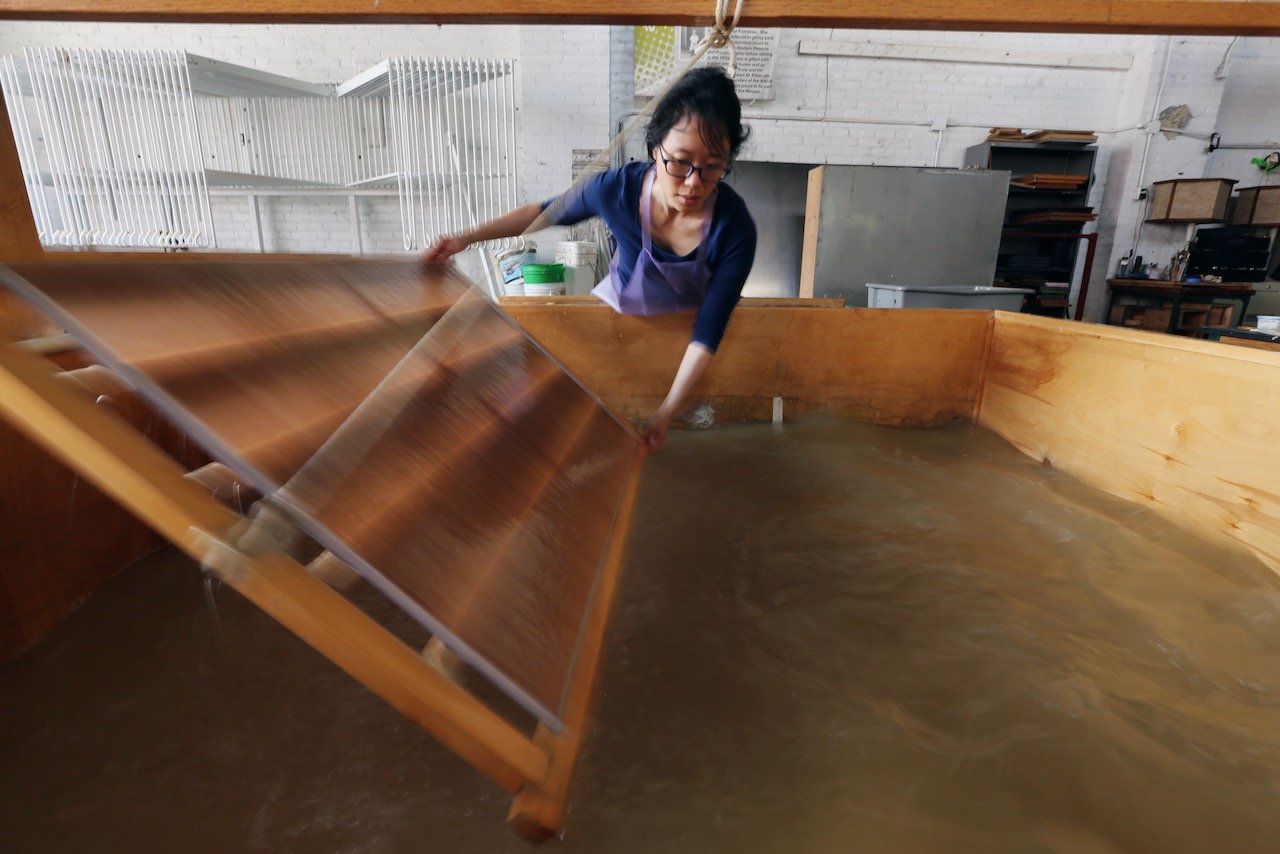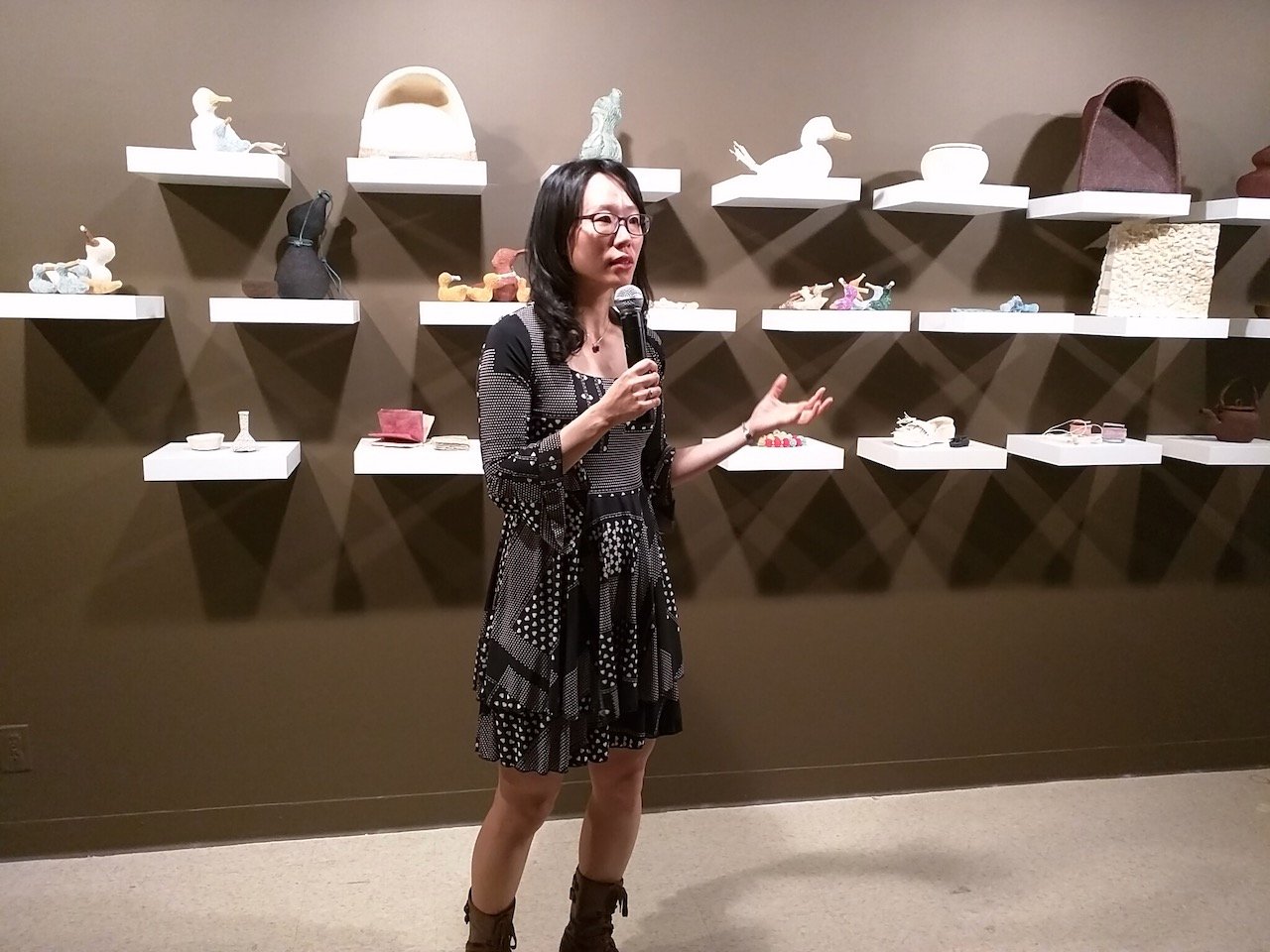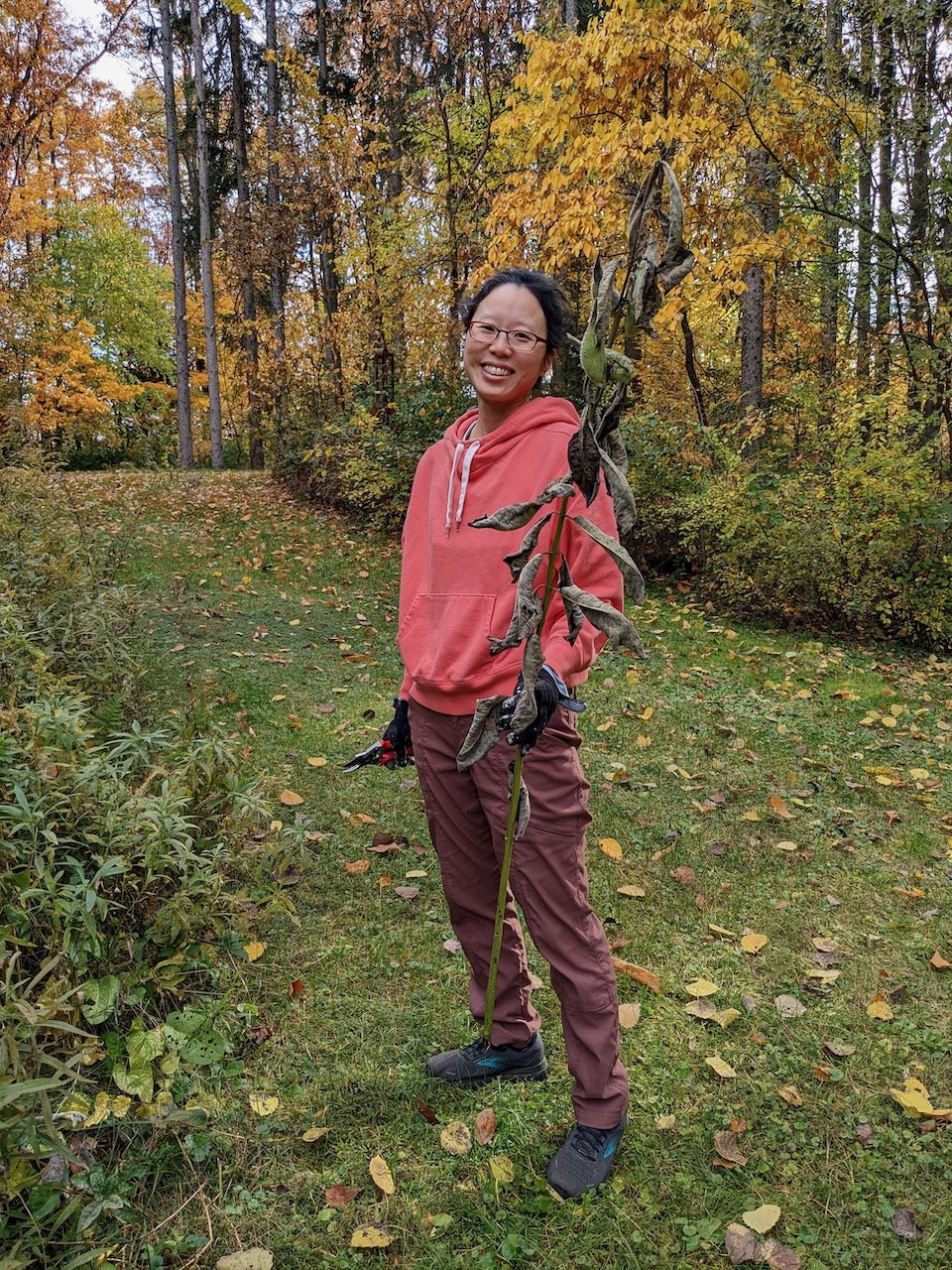
Aimee Lee
PAPERMAKING CHAMPION
Aimee is a leading authority on the history and technique of Korean papermaking and allied crafts. In 2012, The Legacy Press published Aimee’s book Hanji Unfurled, a singular English-language reference on the subject of Korean papermaking. Aimee established the first full-size hanji studio in the US at Cleveland’s Morgan Conservatory. She has conducted workshops, given lectures, and taught extensively around the world. As a deeply committed expert and artist, Aimee has made an outsized contribution to the field, working with dedication to share her knowledge of a long-neglected papermaking tradition.
Aimee Lee
Essay by Lisa Haque
Recently I realized 2023 will mark twenty years since I first met Aimee Lee when we were graduate students in the Interdisciplinary Book and Paper Arts MFA program at Columbia College Chicago. Aimee was one year ahead of me in the three-year program, but at the time, it felt like light years. She always said exactly what she meant and dove into her work with a focused intensity I found both thrilling and intimidating. One of my core memories of her actually revolves around methods of procrastination. We were both in the midst of a large project, trying to make some headway with content. Instead of more typical delaying activities: excessive snacking, cleaning, or general avoidance, Aimee proceeded to sew 150 books to work through her mental block! I knew then that this was someone extraordinary. This was just an inkling of what she was capable of, and my initial impression grew from one of intimidation to deep respect and gratitude for what she has accomplished as an artist and contributor to the field of hand papermaking.
One glance over Aimee’s résumé reveals an extensive list of exhibitions, teaching positions, workshops, and publications. Reading her entertaining and frequently updated email newsletters over the past few decades, I have glimpsed her travels around the globe: across the US, to Canada, Europe, South America, Australia and multiple trips to Korea. All of this would be impressive for any one individual, but this list represents something much larger in Aimee’s case. She has illuminated a tradition largely unknown in the United States, Korean papermaking or hanji, and connected it to her own artwork as a Korean American. The long list of courses, workshops, and lectures represent her incredible drive to share this knowledge with others. Her name and work has become inextricably linked to hanji, and to hear her discuss it one cannot help but feel compelled to hear more about the how and why of what she has done.
Listening to her speak about her experiences with Tatiana Ginsberg, an artist and Co- Director of Artistic Projects and Master Collaborator at Dieu Donné in New York, the term “visibility” came up again and again. As Aimee puts it, a seed was planted while we were graduate students together at Columbia College Chicago. While all of us were getting swept up in the seductive process that is papermaking, Aimee was frustrated at the gap in knowledge she found when she looked into its history in Korea. To paraphrase her, we learned that papermaking traveled from China through Korea on its way to Japan, with Korea rather an afterthought in the discussion. This seed of an idea—learning more about the history of Korean papermaking, what distinguishes it from papermaking of surrounding regions, and its direct link to cultural traditions—developed into her Fulbright proposal. Aimee credits a helpful reader for emphasizing an essential element in its success, “making her dream visible.” That is, identifying her dream in its biggest, wildest, most inclusive form, and putting it to paper.
In 2008 Aimee made this dream visible, traveling to Korea on a Fulbright scholarship, tracking down and meeting masters of the craft of hanji, and learning about related arts in the process. Sharing this knowledge became paramount upon her return, and her ambition went into overdrive when she worked with a group of previously unknown-to-her other artists, interns, and craftspeople at the Morgan Conservatory in Cleveland, Ohio to build the first Korean papermaking facility in the western hemisphere. Together with Tom Balbo, the then founder and director of the Morgan, they planted a papermaking garden for the necessary fibers, constructed a specially designed vat, tested the resulting paper with artists for uses, and arranged exhibitions of the work.
Aimee’s reach extends far beyond the studio at the Morgan, and the numerous groups she has taught and lectured over the years. In 2012, her award-winning first book, Hanji Unfurled was published by The Legacy Press.
Aimee has made hanji visible to the world outside Korea over the past few decades through this work. At her own studio east of Cleveland, Ohio she makes her students feel visible as well. At the start of each class, she posts a welcome sign with each student’s name on pieces of hanji. At the end of the session, Aimee takes these papers down to wrap up the sheets the students have made with her. To have your students feel seen by you as individuals, to openly share hard-earned knowledge and skills you have spent years tracking down and mastering, and then to wrap up the physical manifestation of this knowledge and give it away to them—what a poetic and poignant metaphor for the kind of teacher Aimee is.
Equally profound is the full circle students are now making with Aimee at her home studio. Whereas she was the one to seek out masters to learn from all those years ago, students from the Korean diaspora are now finding their way to her. How beautiful that the Aimee I knew in graduate school, frustrated and inspired by the lack of in-depth coverage of traditional Korean papermaking, is training the next wave of students to keep it going.
Aimee describes knowledge as an ever-expanding circle, and when she speaks about it, I too become excited about how papermaking works this way—one question expanding into concentric circles of knowledge and more questions, more curiosities. Over the decades, sometimes we feel our circles shrinking, as our responsibilities at home increase, our travel decreases, or we just dig so deep into one ring of knowledge, we forget to look up around us. Through her dedication, curiosity, and commitment to education, Aimee Lee reminds us this need not be the case. If we keep seeking out that which intrigues us, the resulting quest pays us back with more knowledge, better questions, and in the case of Aimee, extraordinary humans to encounter on our journeys.

Become an NAHP Member
Join our vibrant hand papermaking community and access your membership benefits.














